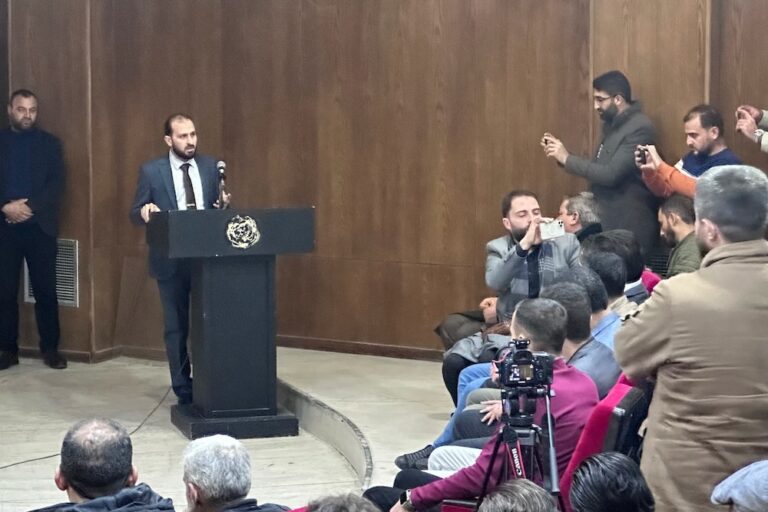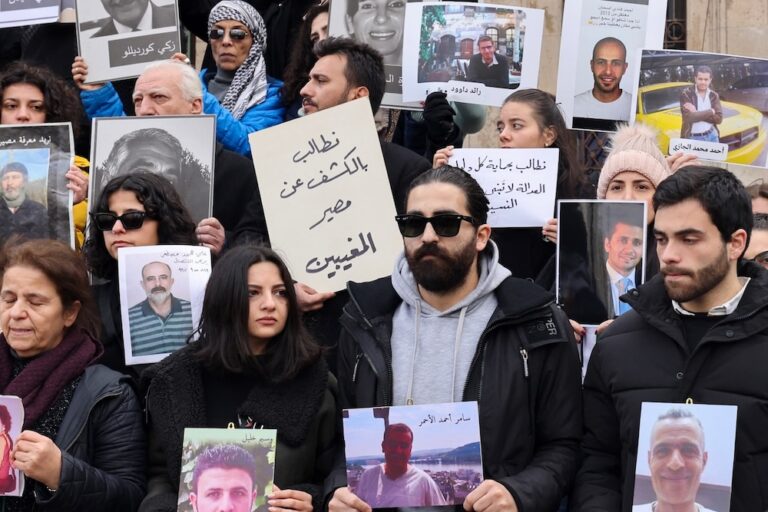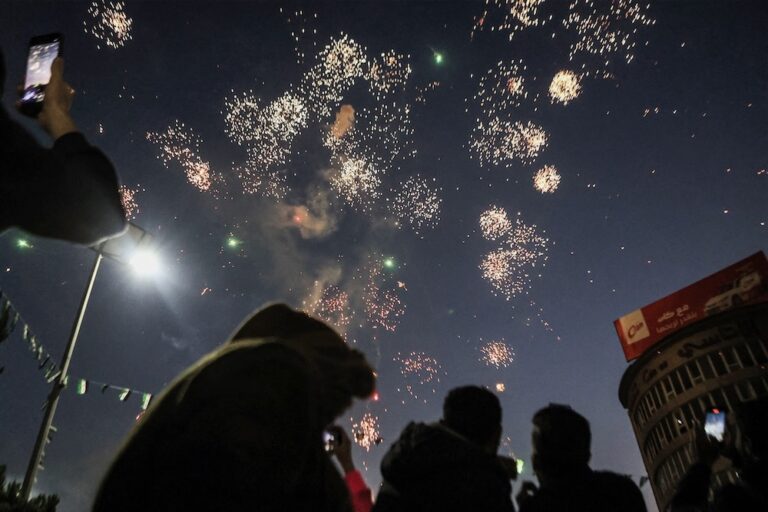Around 10 citizen journalists have been killed since late May, according to RSF.
(RSF/IFEX) – 7 July 2012 – A total of 33 professional and citizen journalists have been killed since the start of the uprising in Syria in March 2001, Reporters Without Borders said today, after attending yesterday’s meeting of the “Friends of Syria” in Paris as an observer.
The past few weeks have been particularly deadly, with around 10 citizen journalists killed since late May. Reporters Without Borders is also very disturbed to learn that freelance journalist Mohamed Sami Al-Kayyal was arrested in the coastal city of Tartus on 27 June.
“’We firmly condemn the remorseless crackdown and accelerating cycle of violence in what is now a civil war,” Reporters Without Borders said. “Freely and independently reported news and information are now an absolute necessity but they are unfortunately getting rarer and rarer. June saw the death of an unprecedented number of citizen journalists who have been sacrificing their lives to provide video footage of the uprising, the crackdown and now the military operations by armed groups fighting the ruthless Assad regime.
“We would also like to stress the difficulty of verifying any information coming out of Syria. The regime has managed to impose a media blackout by posing many obstacles to visits by foreign journalists – who are exposed to great danger if they come – and by jailing Syrian professional journalists who refuse to relay government propaganda. As for the activists who try to report and document the regime’s atrocities, they are hunted down relentlessly by the security services, which kill them or sometimes torture them to death.”
Following the war
The latest victim is Wael Omar Bard, a citizen journalist who was killed in Jarjanaz, 40 km south of Idlib, on 26 June. Bard used to live in Saudi Arabia and it was there that he started supporting the Syrian uprising by posting information about it on social networks. Then he returned to his native Syria armed with just a video camera and started filming demonstrations and the regime’s atrocities.
According to the Doha Centre for Media Freedom, he was filming a clash between the regular army and the Free Syrian Army (FSA) when he was killed by a shot to the heart. Activists said that on the eve of his death he went back to the village where he was born, Teftanazz, 10 km northeast of Idlib. He went there to bury his brother, a doctor specializing in emergency cases who was murdered by intelligence officers.
The citizen journalist Hamza Mahmoud Othman was fatally shot by a sniper in Homs on 21 June while filming the regular army’s shelling of two of its districts, Jobar and Al-Sultaniyeh. He often posted videos online showing events in Homs, which has been the scene of violent fighting for many months.
He was the brother of Ali “Al-Jedd” Othman, the citizen journalist who ran the Baba Amr press centre in Homs until it was destroyed in February and who was then captured by intelligence officers on 28 March.
Bassim Darwish died on 15 June from the injuries he received two days earlier in an explosion while covering the bombing of Rastan, a town 30 km north of Homs, by two military aircraft. He was one of the founders of the Rastan press centre and had covered many demonstrations in the region as well as the regular army’s operations.
Ayham Youssef Al-Hariri, an anti-government activist since March 2011, was fatally injured by the blast from a shell in Deraa on 13 June. Another local activist told the Doha Centre for Media Freedom that Hariri had been filming the army’s shelling of the Deraa district of Al-Sadd when he was hit by the explosion.
Aged 35, married and the father of five children, Hariri had been imprisoned and tortured twice by intelligence officers. As well as gathering and distributing news, he organized demonstrations, delivered aid to the families of victims and helped smuggle government opponents across the nearby border into Jordan.
Abdelhamid Idriss Matar, a 22-year-old student of agro-food engineering at Baath University in Homs, was fatally injured by a shot fired from a tank as he was filming an assault on Al-Qussair, a town 25 km south of Homs, on 31 May. He often filmed demonstrations and army operations, posting his videos on YouTube.
Reporters Without Borders already reported the deaths of two other citizen journalists last month –Ahmed Hamada in Homs on 16 June and Khaled Al-Bakir in Al-Qussair on 10 June.
The Coordinating Committee in Tel Rifaat, a town 20 km north of Aleppo, said Mohamed Hamdo Hallaq was killed by a shell while filming the army’s bombardment of the nearby town of Azaz on 2 July. The Doha Centre for Media Freedom said a citizen journalist identified as Samer Khalil Al-Sataleh was killed during the shelling of Douma, a town on the western outskirts of Damascus, on 28 June. And the Syrian Journalists League said Ghias Khaled Al-Hmouria was killed while filming an FSA operation in Douma on 25 June.
Nonetheless, due to the difficulty of obtaining information from Syria, Reporters Without Borders has not yet managed to independently confirm the deaths of the three people named in the previous paragraph or the fact that they were citizen journalists.
Reporters Without Borders has confirmed that, as of yesterday, a total of 33 Syrian citizens and professional journalists have been killed in
connection with their journalistic activities since the start of the uprising in March 2011.
(. . .)


